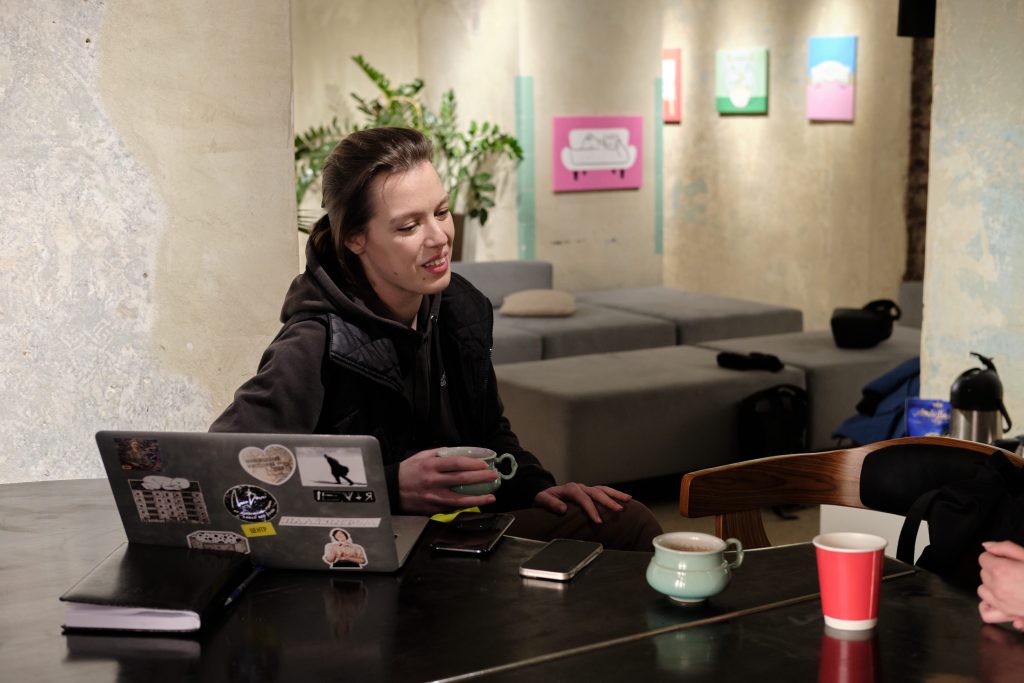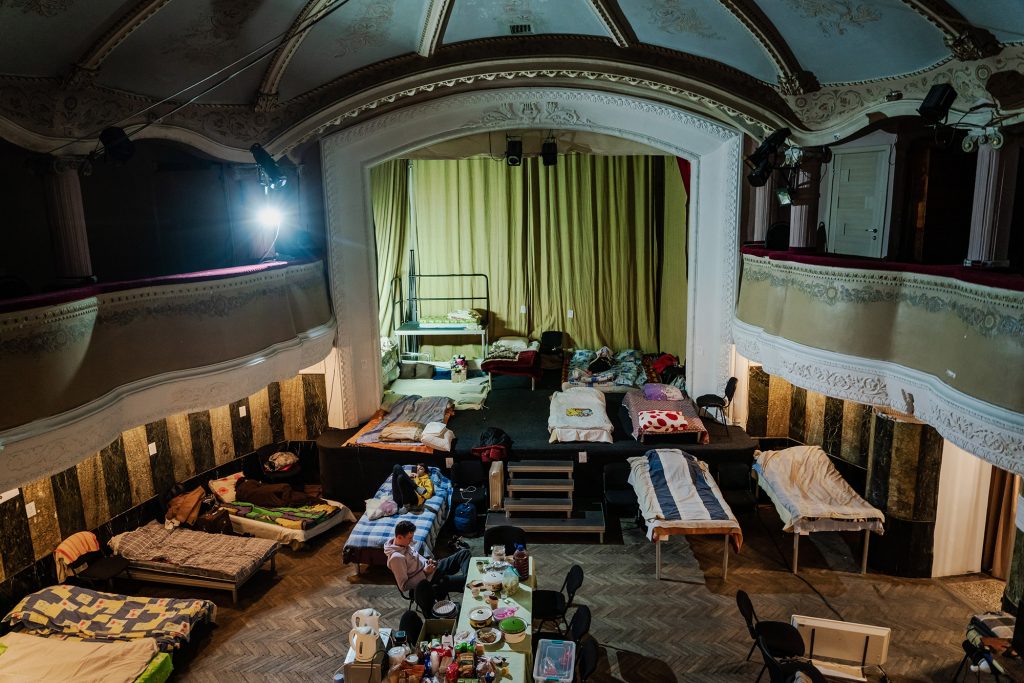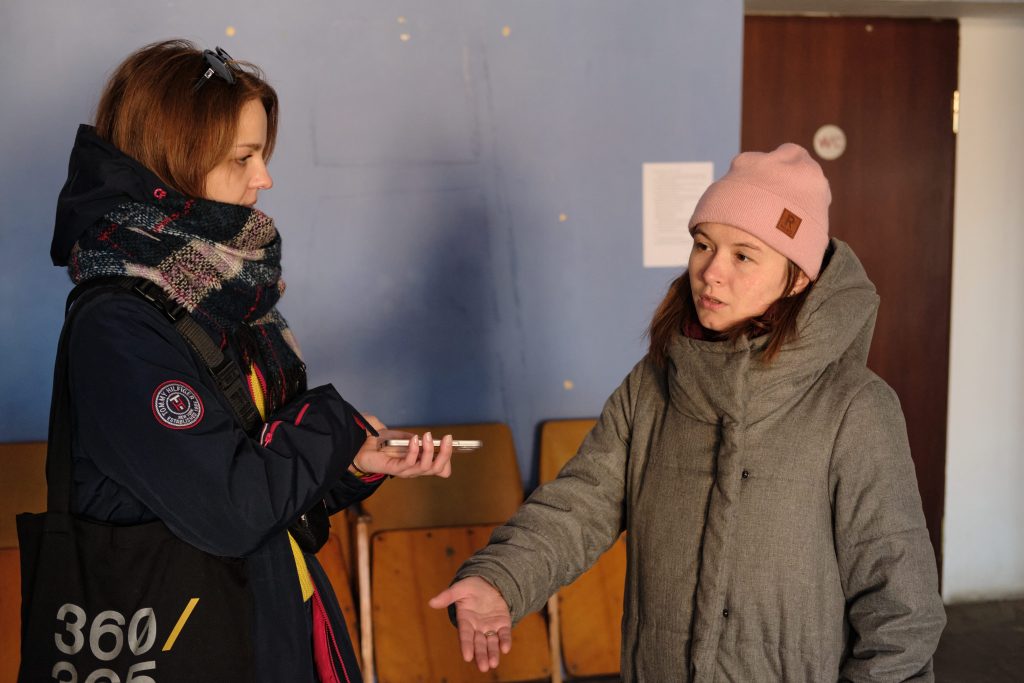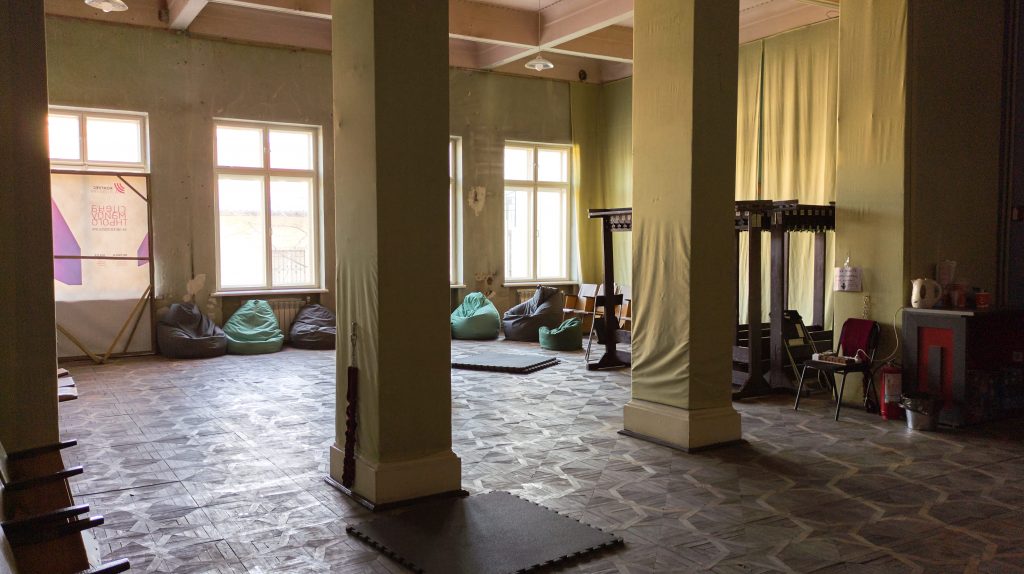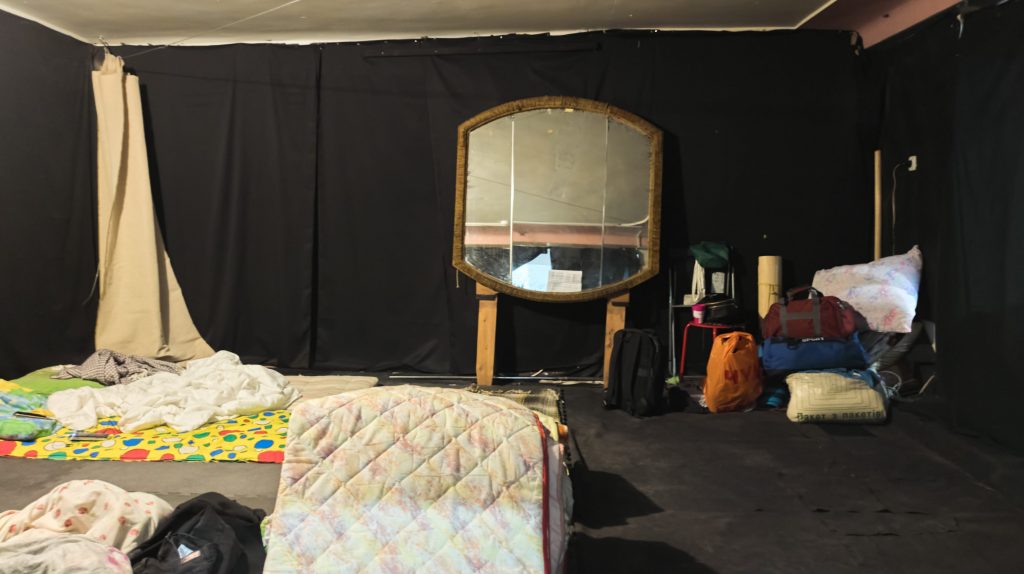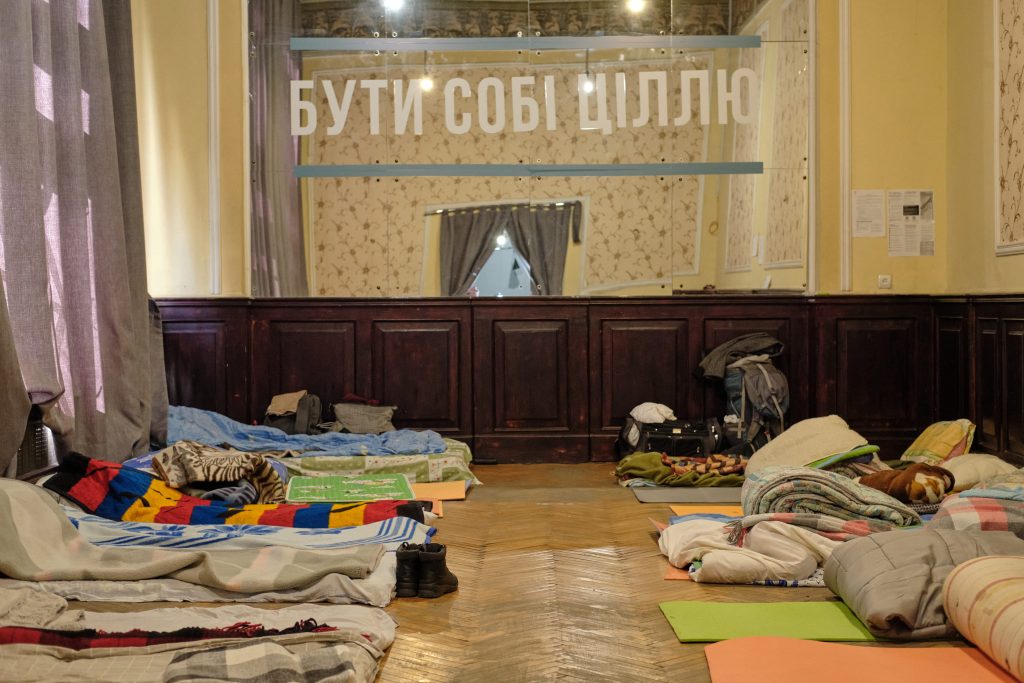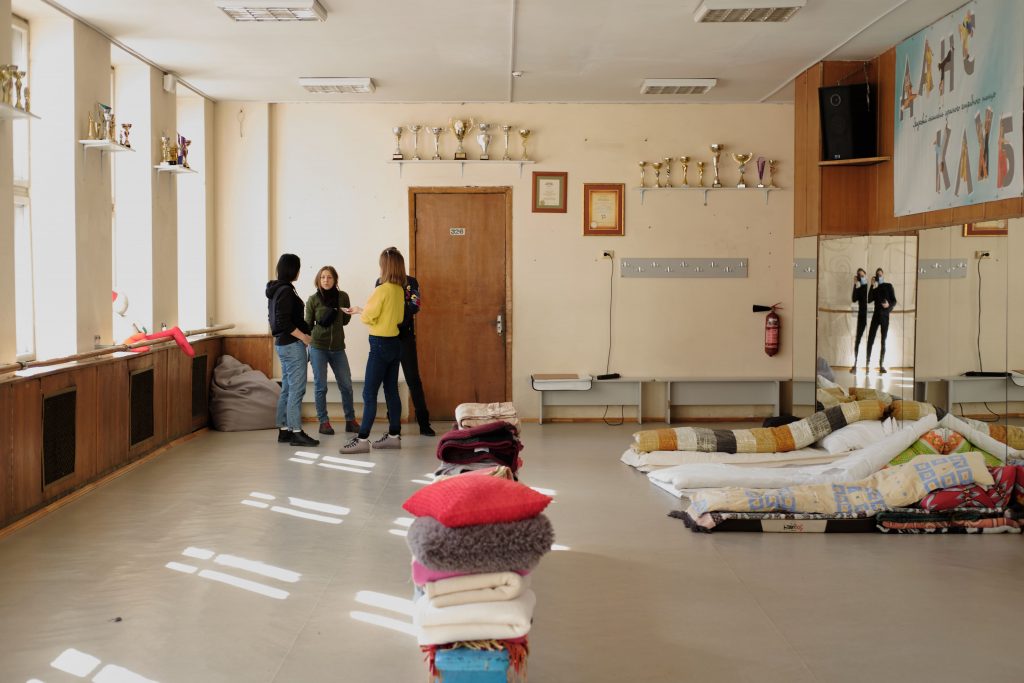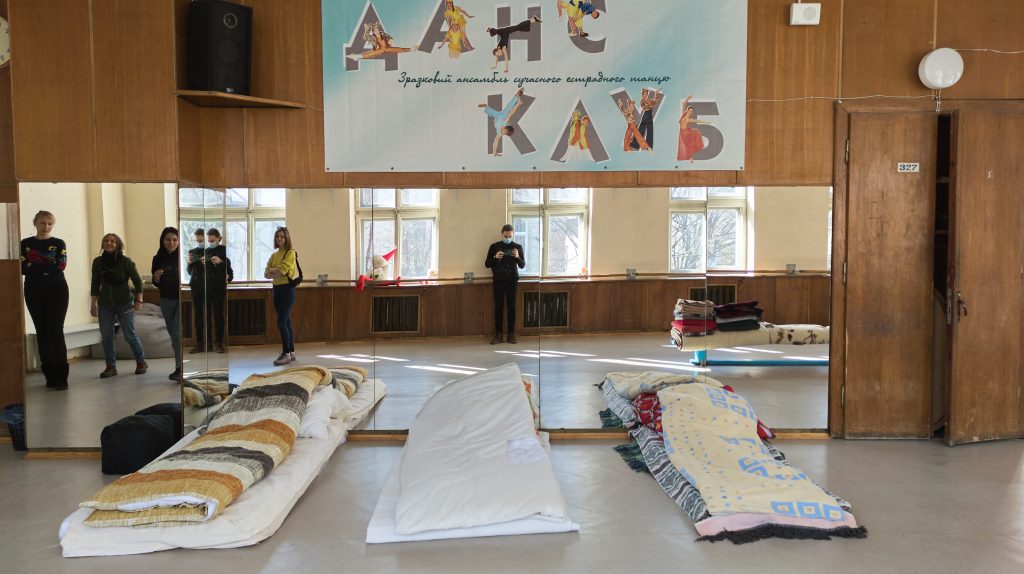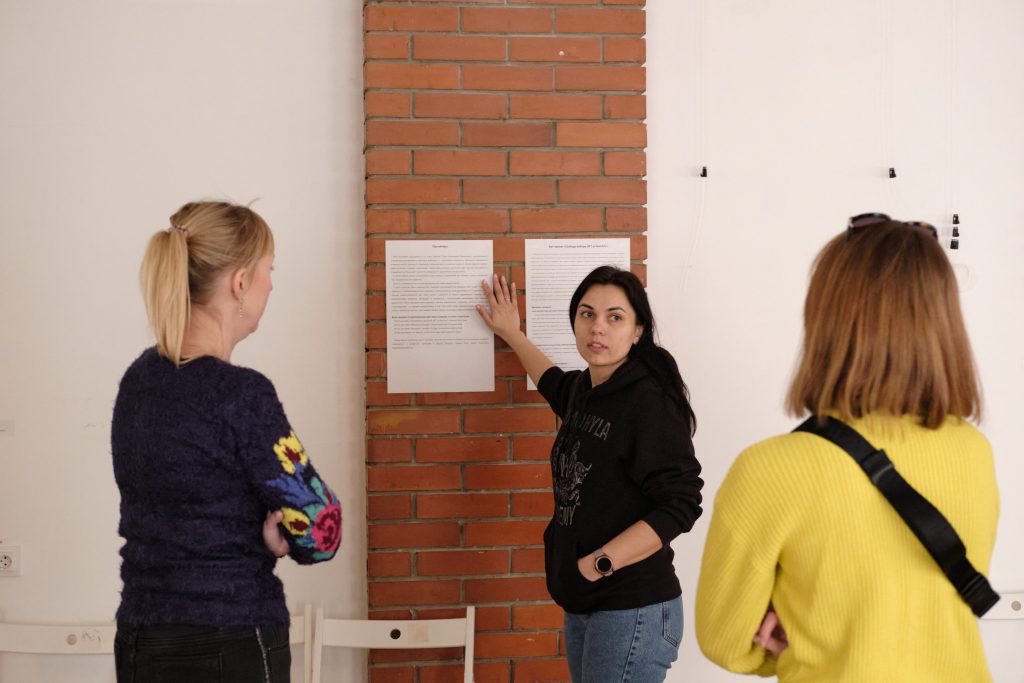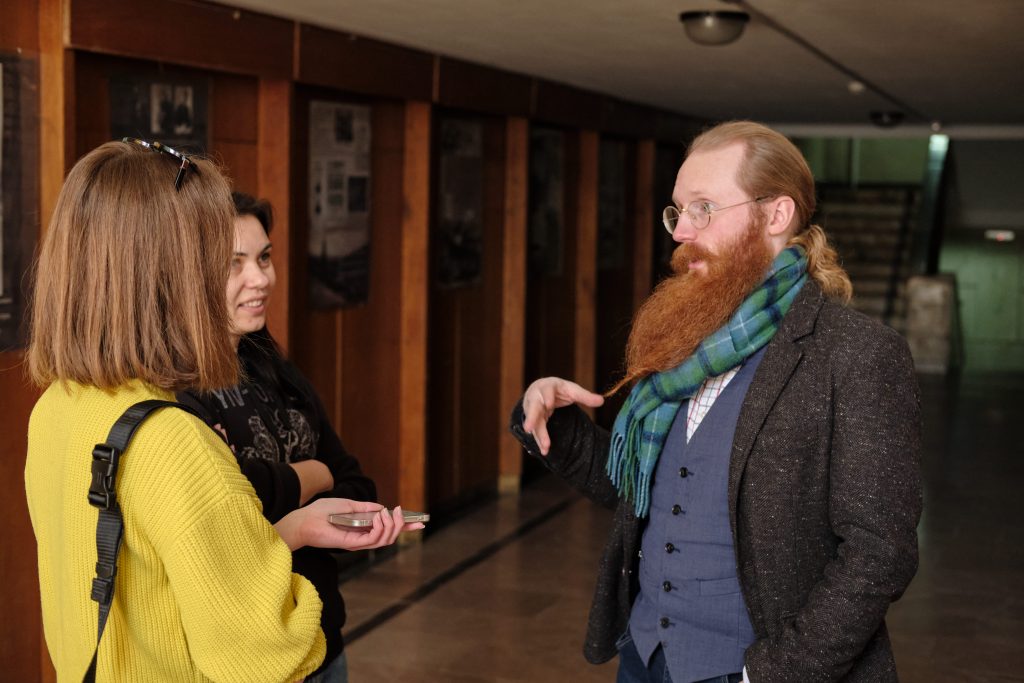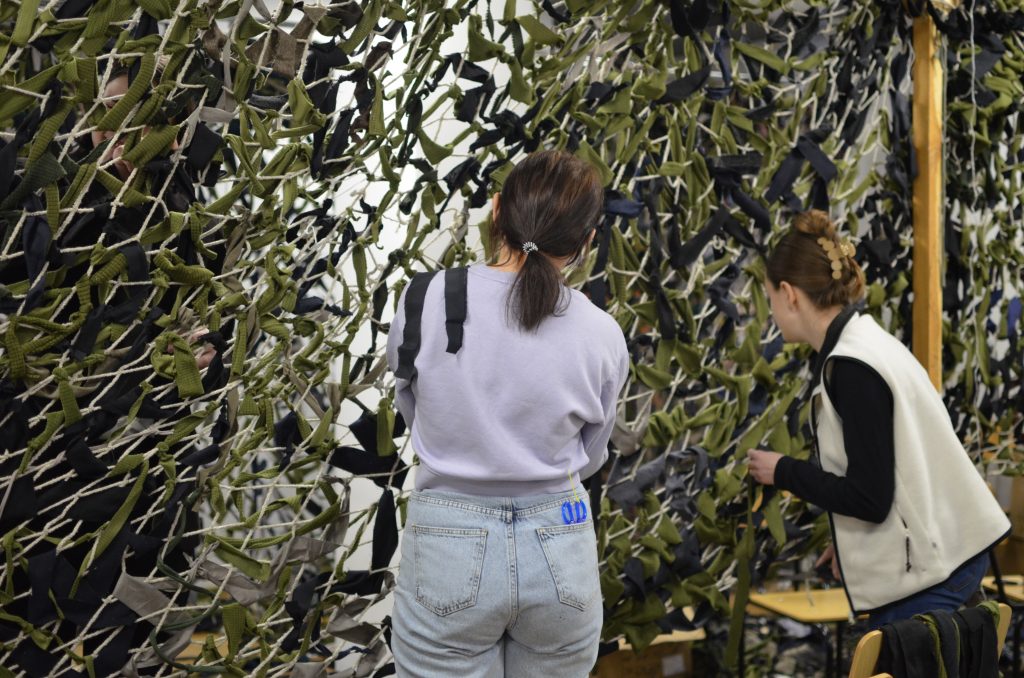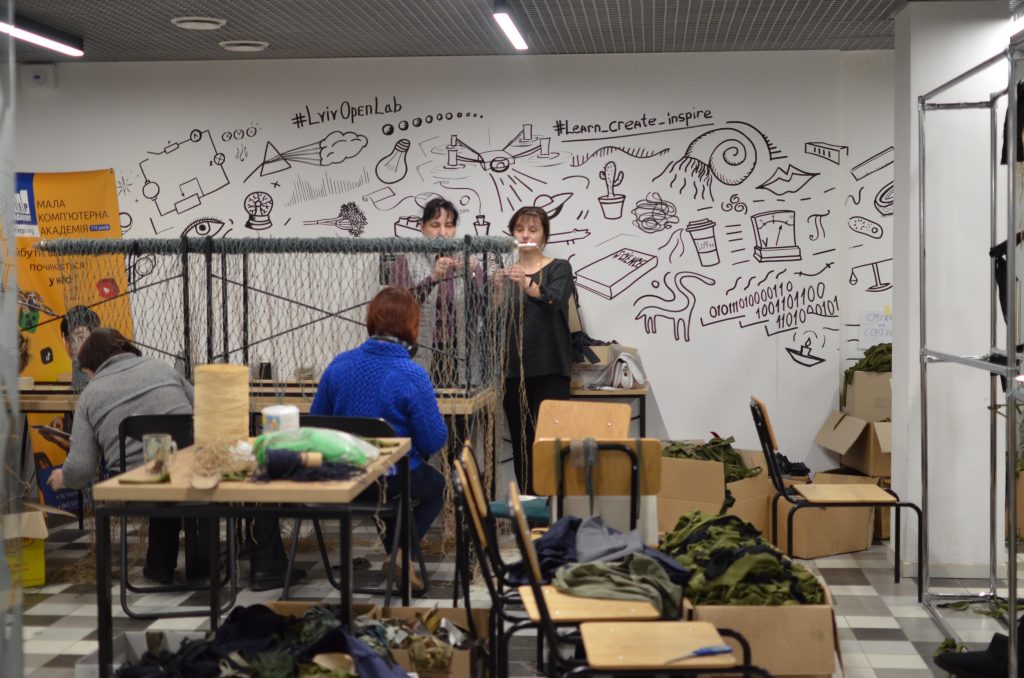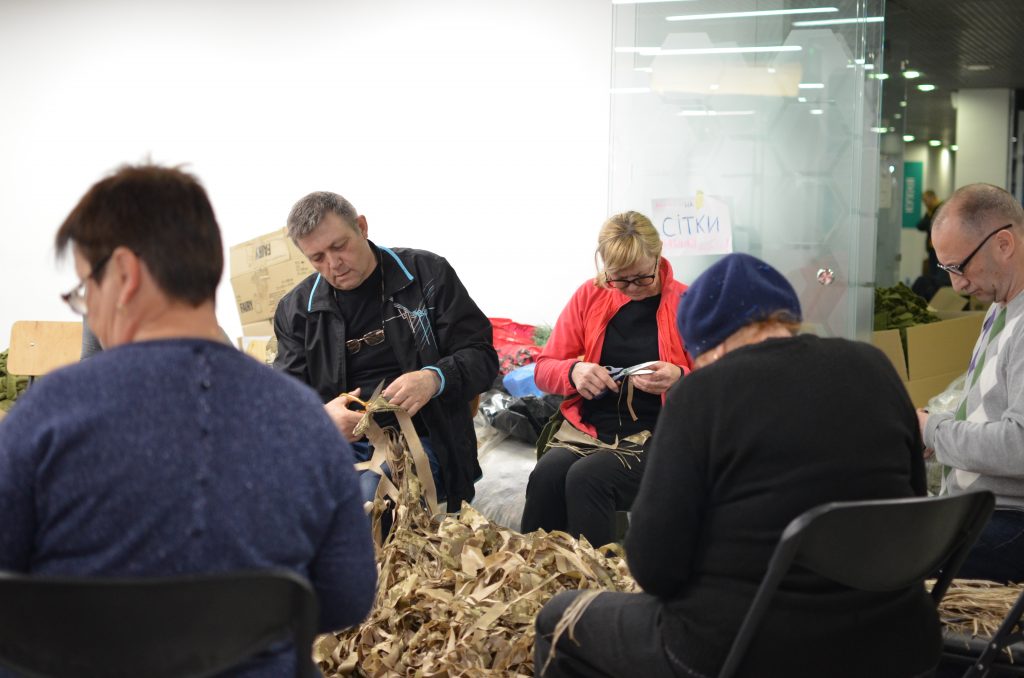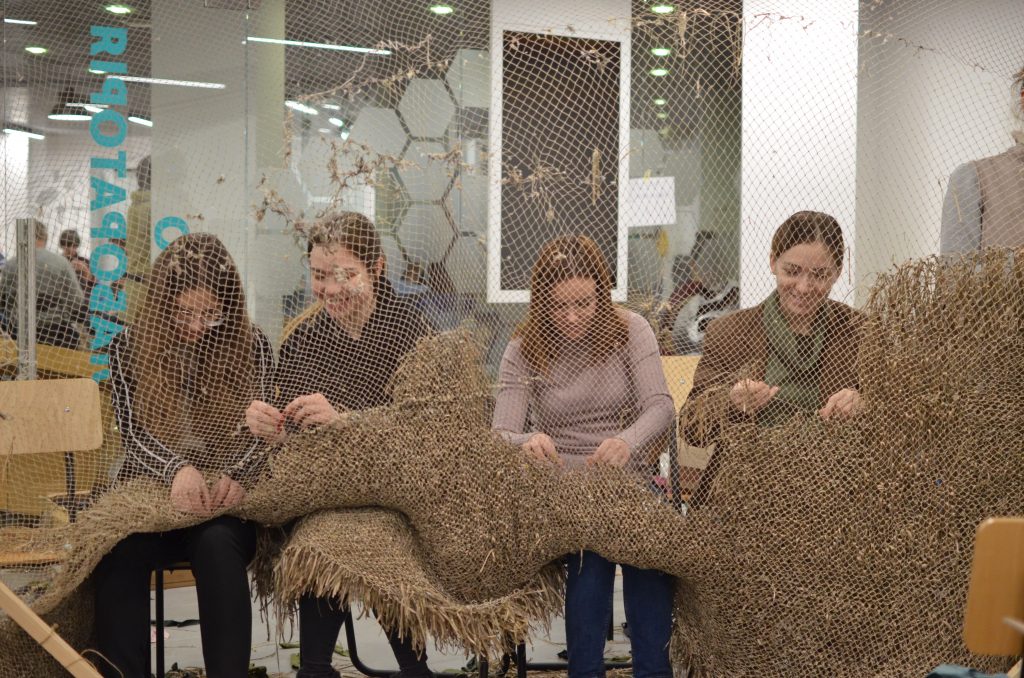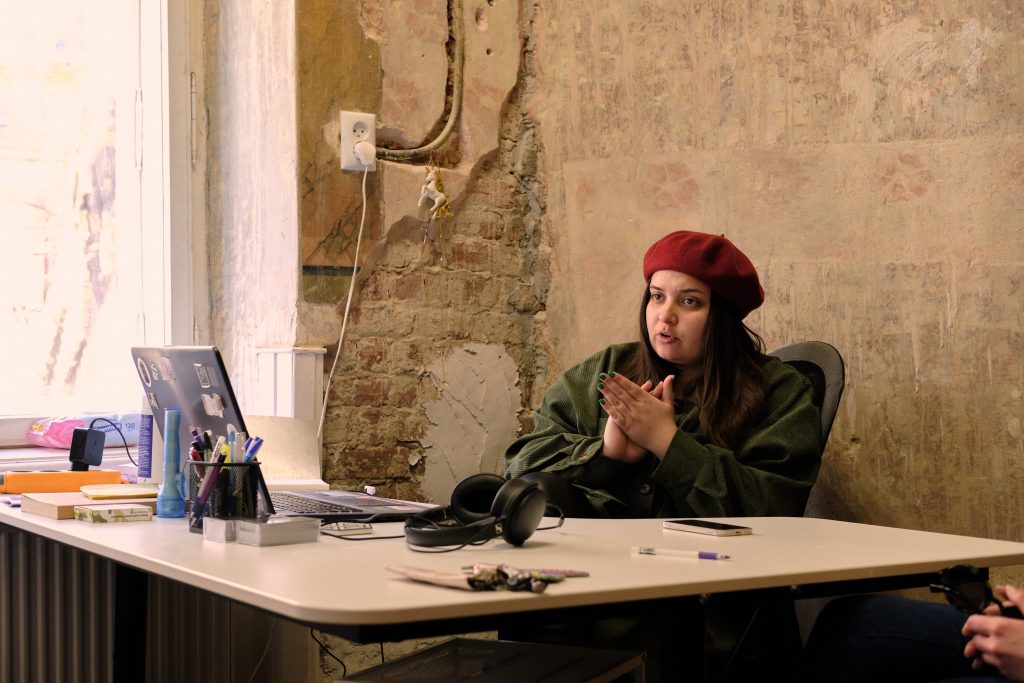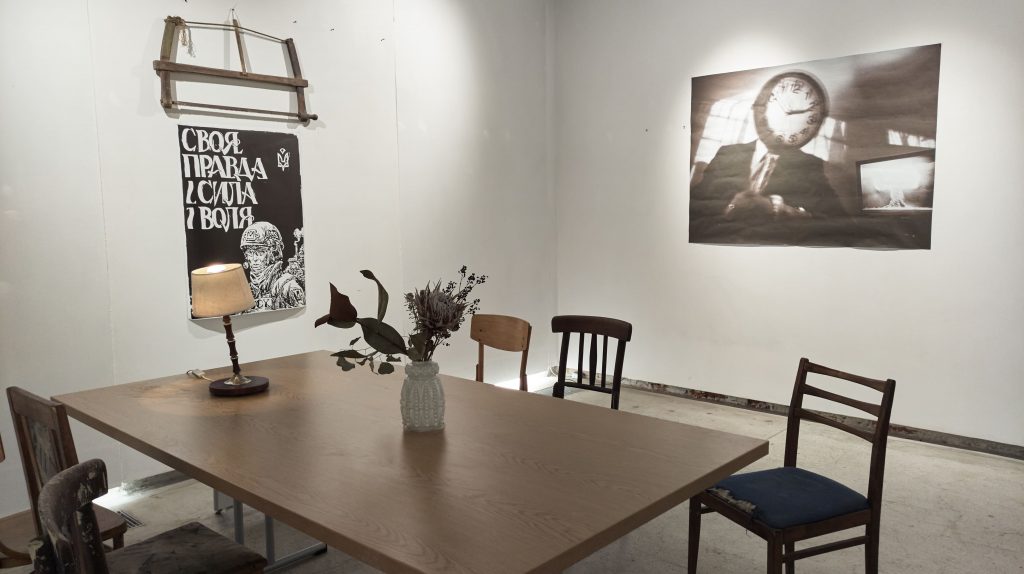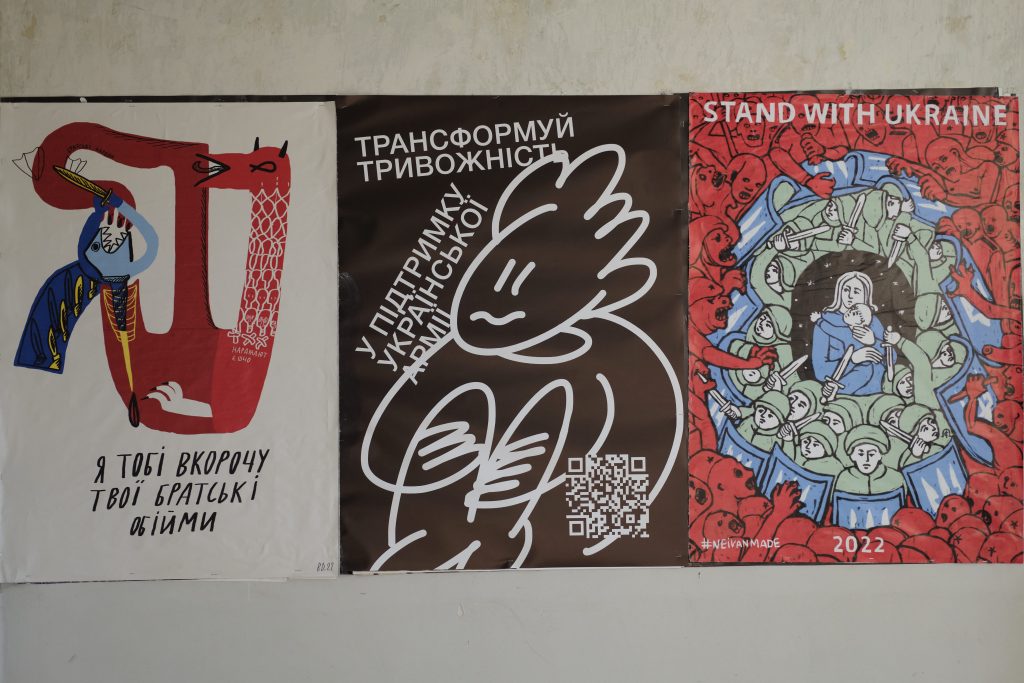Coexisting: Lviv Cultural Institutions working in a Wartime.
Today Ukraine is our common case. The Cultural Strategy Institute looks at the work of cultural institutions at a time that no one could have imagined — in the wartime. We arranged interviews with a number of Lviv cultural institutions — theaters, libraries, cultural and art centers — to ask about their current activities, the areas into which they channel their efforts, and the change in the working format.
A large number of institutions have sheltered internally displaced persons (IDPs), provided work with children and humanitarian aid and set up educational and study activities. Further information may be found here in our article.
— The Arts Serving as a Safe Haven
Since the very first days of war, the premises of Lviv Municipal Art Centre have been transformed into the shelter for IDPs from the Ukrainian regions where the heaviest fightings are under way. The team and volunteers of the Centre (20 people in total) have been delivering the people from the railway station 24/7 and taking them either to their shelters or to the local administrations to register the newcomers. Some people in terrible state of mind were picked up right from the streets. In two weeks, the Centre provided shelter for 400 IDPs, with 400-700 people transported in a single day.
The Center caters for food, warm clothing, and a lounge. Besides, attention was paid to the psychological support of the IDPs — the team of volunteers are working with the displaced and promoting their employment as well.

Liana Mytsko – the Director of LMAC
— We have already hired two people to work in our kitchen. They were our first IDPs, having arrived here with their mother and their sister. The women are now headed for Poland, and the two boys have tried to be enlisted but they have been rejected so far. ‘And what are you, baristas?’ they were asked”, — Liana Mytsko, the Director of the Centre recalls with a smile. — And meanwhile our girls in charge of the kitchen were going abroad, so we made such an interchange. And it’s basically a logical process. I have huge hopes that the City will soon join in.
Theaters are also helping migrants. Yes, many were impressed by the unusual and even fairy entourage of the shelter at the Les Kurbas Theater. This was described in detail in an interview with Marichka Paplauskaite with Natalia Rybka-Parkhomenko, a theater actress who was the first to offer to receive immigrants here, for the Reporters resource.

the Les Kurbas Theater
The Theatre of Lesya Ukrainka is also engaged in assisting the IDPs. On the third day of war its staff organized transportation of the IDPs to Poland. Olha Puzhakovska, the Theatre Manager and Art Director, stressed that supporting the logistic initiative played a crucial role, for the buses not to just take people to the border line but straight to Polish cities. There were a lot of pregnant women or the elderly among the passengers who found it quite difficult to queue in the pedestrian crossing line for many hours in a row. With the passing of time, logistics was optimized, as the team of volunteers came across at Lviv Andreolli-tour transport company hiring local drivers, which significantly improved the speed of transportation. In total, more than 1,000 people have already been driven to Poland (as of March 21st). The Polish CHLEBEM I SOLA and Podróżnych Ugościć humanitarian foundations cover the transfer expenses.
Moreover, the Theatre has developed a lot more humanitarian initiative programs: they organize shelter, communicate with the newcomers, launch crowdfunding campaigns, work on the mass gathering spots, and promptly send aid for the military personnel. Particularly, the Theater has already been delivering carloads of humanitarian aid to Kyiv, Sumy, Kharkiv, Mykolaiv, Zaporizhia, Poltava and other cities. Theatre managers, both men and women,built their own team of volunteers, whose number is constantly growing. Daily meals are prepared in the Theatre kitchen, later to be distributed among the people queuing up to the military enlistment office or at the railway station; some employees bake their own homemade bread. What is more, a sewing room was set up on the theatrical premises, where dress cutters and volunteers make buffs, balaclavas, and yellow ribbons for the territorial defense units and the military forces. Incentive was initiated by one of the shelter residents from Kyiv. The next step is to sew thermal underwear and test its technology, given the special attention to minute details (the right fit, the special fabric, etc.).

Olha Puzhakovska, the Manager and Art Director of The Theatre of Lesya Ukrainka
— On the first day of the war, we sorted out all our costumes. We gave away all the costumes and fabrics of proper colour to make camouflage nets for Army. By irony, our institution was formerly known as the Soviet Army Theatre, so the uniforms that were still left — are all transformed into nets too — Olha smiles.
The shelter in Lesya Theatre breathes with warmth and comfort. The maximum number of residents the theatre can simultaneously accommodate is 25 people. For the cohabiting to be comfortable certain rules, such as to return bedding upon check out, were implemented. “Just like with Ukrzaliznytsia [Ukrainian State Railway Services – translator], — the locals say in jest. The list of rules can be found on advertisement board. Here you can also find a list of doctors who provide online counseling, the addresses of catering services, local administrations, and other tips that may come in handy.




The Theatre of Lesya Ukrainka
Another shelter in Lviv is Hnat Khotkevych Palace of Culture. Three shifts of staff are on duty round the clock; most often they welcome the incomers from the nearby Pidzamche railway station. The local administration and the police give on-site hints as to Hnat Hotkevych shelter, where the IDPs can find help and store their belongings while they are being registered. Dance halls, offices and other spaces have been equipped with heaters and bunks, 20-22 people are received overnight; they are mostly women with children. A 2-month-old boy from Kharkiv has been the youngest resident so far.
Oleksandra Onyshkevych, the Palace Manager, says that some employees are now assisting in one of the children’s boarding schools in Lviv, where children from Kharkiv, Dnipro, Mykolaiv have recently been moved. The team is also actively collecting humanitarian aid — all 100 % of employees and departments are engaged in the process. Humanitarian aid can roughly be distinguished as the one for the military forces and the one for the IDPs. Lviv residents donate various clothes, shoes, prams, bedding sets, pillows, even coaches for pets. There is a demand for everything. The fine arts room is now serving as a medicine store room and as a medical care facility. The support of the volunteers and patrons from Poland ensures that we receive foods for babies, sublimates and dry rations from abroad.




Hnat Khotkevych Palace of Culture
— We have established communication with Poland, with Belgium. We also receive help from Germany and from Romania. Everyone asks what is needed, we get certain requests from military brigades for our part, so we collect it and then send them everything they are in want of. […] We have already transferred aid to Sumy, Kharkiv, Okhtyrka, Mykolayiv. It is not only the military forces that ask for the aid — of course, we carefully check everything, because different situations may happen.
Foreigners join in the volunteering initiatives on spot, in Lviv. Gillem Aurvey, born in Ireland, has long wanted to visit Lviv, because he has friends here and had never been to Ukraine before; he was due to travel to Ukraine in April. However, he came here earlier and under much different circumstances driven by the desire to help:
— Since the outbreak of war, I asked Oles [Onyshkevych]: “Do you have anyone to give a helping hand from abroad?” And they told me they hadn’t. So I suggested that my brother and I come here to deal with cross-border issues. Later, my brother came back home and set up a supply chain from Belgium here,whereas I stayed here to provide a direct help to Olesya, Bohdana Brylynska [Bohdana Brylynska — Head of Lviv — UNESCO City of Literature Office] and the rest of the team, to coordinate part of the transfer processes.

Oleksandra Onyshkevych, the Palace Director

Gillem Aurvey, a volunteer
Simultaneously, the Palace attempts not to fall out of the educational process and continues to hold online classes for children. The theatrical studio is working, poetry performances are being held.
Since the beginning of the Russian invasion, 250 people have been sheltered on the premises of The Center for Urban History of East Central Europe, Jam Factory Art Center and Rondo Cafe Lviv (as of 21.03). The incomers are from Dnipro, Zaporizhzhia, Kyiv, Kharkiv, Bucha, Irpin, Gostomel, Lysychansk, Lubatyn, Vyshneve, Zhytomyr, from Canada, Syria, Nigeria, Ireland, Poland, and the United Kingdom. Jam Factory has equipped its main buildings with a storage facility and a humanitarian assistance distribution center. The Cultural Strategy Institute has also transformed its offices for humanitarian needs, and some educational managers are working with the orphans from Kharkiv.
— That’s My Street
District institutions engage locals in the cooperation as well. In particular, Lviv Open Lab Innovative Education Youth Centre has organized 1,050 volunteers to weave camouflage nets in just three weeks. Materials for nets (threads, fabrics, painting sprays, wooden bars) are crowd sourced. On average, 50 volunteers work and produce 10 nets in the Open Lab every day; 215 nets have already been made, and the largest one is 200 m long. Furthermore, in cooperation with the Sverlyk creative workshop, free workshops for displaced children are organized here. The children learn about glass and wood craft, for example the orphans from Luhansk under the guidance of fine arts masters carved the Ukrainian coat of arms with the jigsaw. The studio also organizes field workshops in other Lviv shelters.




Volunteers weaving camouflage nets in Lviv Open Lab
Lviv Dovzhenko Center works in several areas: providing housing, catering, and education.
— A local restaurant prepares food for our residents, and some of the long-term dwellers join in our incentive. For instance, Lida from Zaporizhzhia and her daughter are responsible for the kitchen, everything works as a clock: we have shifts and people on duty. We are also involved in humanitarian aid: it is received, sorted, and sent to the military forces, the civilians, the children. “We cooperate with the Church of the Most Holy Virgin Mary Nativity in this direction, — says Marta Ivanyshyn, Director of Dovzhenko Center.
More importantly, the Dovzhenko Center along with the Maltese Relief Service holds first aid classes on its premises twice a week. Approximately a thousand people have already completed the course. This is a four-hour training for everyone concerned; the registration is open on the Center’s Facebook page. In addition, self-defense training and the like are also held here. Local residents are actively involved in working in the kitchen, sorting clothes, childcare, and we also have volunteer drivers.
Oleksandr Agashkov, the Director of «Suputnyk» Cultural and Art Center in so-called Levandivka region:
— At the aggravated stage of the Russian-Ukrainian war our staff is continuously ensuring that the territorial defense centre operates round the clock, assists people and shelters them during the curfew, uniting all the possible crisis management areas. On February 24th, we opened the “Suputnyk” as ground shelter facility, our library is also playing similar role. […] We facilitate the work of the territorial defense unit on duty, foot patrols and mobile groups
The second floor here is made fully available to serve the needs of IDPs: 47 temporary places are at hand. The transit and distribution station for humanitarian aid also operates on the premises. The «New Orbits» Youth Center together with the local partners provides IDPs with food, while the locals are actively engaged in catering services. Stable visitors, a nice park area, and a playground, enables the employees to take care of the children, while their parents undergo registration procedures at new place of residence. Moreover, “Suputnyk” keeps in touch with the Italian partners: Ferrera, Avezzano, and Salerno communities and municipalities play their part in supporting residents in need in the village of Sinhury, Zhytomyr Oblast) the Regional State Administration Defense Department in Poltava, the orphanage in Mykolaiv, schools, lyceums, hostels, and hostels in Levandivka residential area in Lviv. The volunteer movement around the «Suputnyk» helps those who are now far away from Lviv — those on the frontlines, in Poltava, Kharkiv, Kyiv, Brovary, and in other zones of active conflict.
Surely, there are certain objective reasons why organizations are not able to take in IDPs or they can provide them with only temporarily shelter. Example: the rooms may be unsuitable for living (there is no kitchen, shower, or heating); there may be little space; the building may be located near the strategic sites; no bomb shelter is available in neighbourhood etc. However, it is not an excuse to stand by. Everyone can make the victory closer in their own way, so the battle the cultural community is fighting in the information, cultural and diplomatic fields plays a vital role.
— Save the People and the Heritage
Since the outbreak of war the Russian troops have destroyed or damaged a great number of cultural institutions, religious buildings, architectural and historical monuments in Ukraine. Once, news about the destruction of the Historical and Local History Museum in the village of Ivankiv (Kyiv Oblast) where the works by Maria Prymachenko were on exhibition,shocked everyone and to date, dozens of such objects have suffered the same fate in different oblasts [regions] of Ukraine (Kyiv, Sumy, Kharkiv, Chernihiv, Zhytomyr, Donetsk, Dnipropetrovsk oblasts).
The Ministry of Culture and Information Policy of Ukraine has created an online resource for documenting war crimes the Russian army commits against humanity and cultural heritage sites. Among the buildings damaged are the Okhtyrka Municipal Local History Museum; the Museum of Military History and the Regional Library for Children in Chernihiv; the “Word” House (Ukrainian: Budynok “Slovo”), Korolenko State Scientific Library and the Municipal Art Museum in Kharkiv. Destruction threatens the museums in the areas subjected to constant attacks of the Russian troops. The staff of many of the museums involved go to work as before in spite of circumstances, trying as much as possible to take care of the collections.
Olha Honchar, the Director of the «Territory of Terror» Totalitarian Regime Museum, has told us how caring for her curators has grown into a definite tool for financial support of the country’s museum environment:
— We keep in constant touch with our fellow curators from the eastern, southern, and central parts of the country. We’ve held the monitoring of each other’s needs and realized that in many regions people did not receive their salaries. Consequently, when the bombing started, it turned out that the stsff didn’t even have money to cover basic needs, let alone something more […] I wrote a post on Facebook asking if there were any foundations willing to support the remaining initiatives in Ukraine. Then my friends and I decided to set up such a foundation of our own, and here it is — from March 3rd till the present day it grew into the Museum Crisis Center.

Olha Honchar, the Director of the «Territory of Terror» Museum
The «Territory of Terror» Museum is implementing this initiative in partnership with the NGO’s «Other Education» (Ukrainian: Insha Osvita) and the «New Museum» (Ukrainian: Novyi Muzey). In the first two weeks (starting from March 3rd), the Museum Crisis Center raised UAH 312,825, which enabled it to provide financial aid to 137 cultural workers of 30 museums from 8 regions of Ukraine (as of March 11th). Infographics. According to Olha, it is difficult to talk about the removal or reconstruction of the monuments until the Russian army ceases the fire and the siege, because “the most important thing is that there should be someone to dispose of the means and resources on site when they are available.” People and their safety come first.
— We set the goal that we, being the museum, will continue functioning as a museum; all the same, we need to find this new format of work in wartime and understand what useful things we can do. In particular, we cooperate with international foundations in order to enhance security of the museum and our collections. What we also do is share stock materials with international and Ukrainian media. These are personal stories about repressions against Ukrainians during the Second World War […] The next stage is major global changes. It is important to keep the current situation under control, to stay in touch with the people who are “ours”.
Meanwhile, other Lviv institutions are establishing communication and partnerships abroad, since many foreign partners offer diplomatic, humanitarian, or resource aid.
Based on this information, the Cultural Strategy Institute prepares a comprehensive compilation of extraordinary residencies, open calls and offers for artists and people of culture from Ukraine every week. Organizations from Poland, Lithuania, Slovakia, Estonia, France, Germany and many other countries are lending a helping hand. Together with the Lviv UNESCO City of Literature office and Khotkevych Palace of Culture, the Cultural Strategy Institute regularly prepares the CultureHeadquaters English-language digest, which is later distributed among partners and opinion leaders from abroad. The mailing aims to spread information on the course of events in Ukraine to the foreign audience, and the information in the digest can be categorized as following: current events, gains and losses of the Ukrainian culture in times of the war, Russian culture banning, support for the Ukrainian army. Read the digest in the CSI blog.
The Lviv City of Literature office distributes a digest and video addresses on the Ukrainian realities among the UNESCO Creative Cities Network members. An extraordinary residence for Ukrainian translators and writers in Košice, Slovakia was also organized.
The cultural front is also being created by the Lviv Organ Hall. Their website and the Facebook page publishes posts with reflections about Ukrainian cultural problems from the professional perspective of the classical music hall. The other issues are also addressed here, for example, why the share of the Russian music still prevails over the European and Ukrainian repertoires; why Ukrainian musicians are repressed and the like. Under the slogan «Cultural War» the Lviv Municipal Art Center collects war-themed posters by Ukrainian artists. These works are shared online and offline all over the country wherever possible so as to boost national morale.
— Ways in Which Lviv «Welcomes the Ours»
Nevertheless, the perspective is shifting. After the first few weeks of the war, when the so-called wave of relocatoions both within Ukraine and abroad was behind, the institutions feelt that there was a particularly strong demand for the aid from the people of culture on site in Lviv and other cities in western Ukraine.
The Lviv Municipal Art Center decided to change its format in the direction of the hub, or «collaboratory», as it is called in the Center.
— We’ve found the niche of creative rehabilitation for the incomers. In order for them to continue working, to meet local people […], my colleagues and I came up with a project called «Cooperation» (Ukrainian: Spivpratsya). We are launching it together with some other institutions which are able to receive visitors […] There are, after all, many people who come to Lviv and don’t want to go to Poland […], but work and undertake further projects here in Ukraine including foreign orders. We want to introduce them to local colleagues, create small joint projects and training for them etc., — says Lyana Mytsko.

«Cooperation» hub in LMAC

LMAC gains military posters from Ukrainian artists and disseminates it all around Ukraine — both online and offline, where it’s possible
Any institution or organization which can provide a workplace or a part of its office for work can join «Cooperation». One needs to fill in a special form on the website of the Centre. «Cooperation» is being carried out in showing regular films at Lviv Municipal Art Center with the participation of Dovzhenko Cultural Educational Center staff. Ukraine’s largest film archive organizes the shows of the best movies in Ukrainian history as well as holds the meetings with its employees staying in Lviv at the moment. Dovzhenko Center is willing to provide cartoons and movies for other places of resettlement.
Under the slogan «Lviv welcomes» the Lviv Gallerists Association has launched a series of free walking events for newcomers. The program includes introductory «walks» along the streets, in the parks and art spaces of Lviv, meetings with artists, historians, and founders of local cultural institutions. Lviv National Philharmonic; «Gunpowder Tower» Design, Architecture and Urban Planning Center; Dzyga, Ya Gallery, and Zelena Kanapa, Icon Art galleries; Gallery 101 art project and others have already supported the project.
Certainly, assisting Ukrainian refugees has been and will be relevant for a long time to come, but we should also provide financial support to the artistic environment inside the country. Having selected foreign programs, the Cultural Strategy Institute focused on bringing those initiatives available in Ukraine to the attention of the Ukrainian artists, professionals and cultural activists who have lost their jobs and sources of income. Under the slogan «For those who stay» the publications are available on the CSI Facebook page.
Yulia Khomchyn, Cultural Strategy Institute Director, shares her views on the up-to-date situation of the people of culture:
— CSI communicates opportunities to the people of culture around the world on a regular basis. Other such institutions make similar digests as well, which is also a good sign: the opportunities exist and they are plentiful. However, I’m interested in something else. Hundreds of Ukrainian artists, writers, musicians, poets, translators, actors, and managers are staying in Ukraine. For the most part, these people have a firm public stand and remain here, at home: they are volunteering, writing, drawing, or translating. In Lviv, almost all cultural institutions work for the needs of the war: they host the IDPs, communicate with them, provide psychological counseling, turn into coordination and communication centers.
But I should reiterate: a good number of them are staying and functioning in Ukraine, in Lviv. That is why it is in Lviv that they should be supported. Despite the war, in Ukraine, there still are the institutions able to develop and manage such programs. Mutual assistance paradygm should be re-coordinated. The European and world funds can provide on-site assistance via the Ukrainian institutions. Yes, it’s more difficult than taking out and sheltering everyone in Europe, but offering any assistance means that one has to proceed from the needs of the target audience.
Ukrainian institutions are already developing similar support initiatives or accumulating the resources of the foreign fund (Artists Support Ukraine Foundation set up by the Port Agency, or Emergency Support Initiative by the Kyiv Biennial, etc.). As for the Lviv organizations, we expect the programs by Jam Factory Art Center, as stated on its Facebook page (UPD: already launched a support program). In addition, the Museum Crisis Center continues to work.
The level of self-organization and mutual support of the cultural environment is impressive. There is no other way but to do more to bring ourselves closer to victory!



